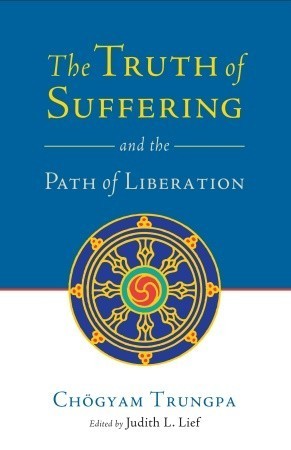
The truth of life has never been better or more succinctly articulated than in the Buddha's teaching on suffering, its cause, and its cessation—the famous formulation known as the Four Noble Truths. This concise handful of words is in fact the foundation from which all subsequent Buddhist teachings grow, and upon which all of them rely. Their wisdom is as pertinent to the scholar of Buddhist philosophy as it is to the ordinary practitioner, as it is indeed to anyone, anywhere, who aspires to liberation. Chögyam Trungpa's in-depth exploration of the Four Noble Truths reveals the subtlety and sophistication that lie beneath these deceptively simple teachings. He emphasizes their profound relevance not just as an inspiration when we set out on the path but at every other moment of our lives as well, showing how we can join view (intellectual understanding) of the teaching with practical application in order to interrupt suffering before it arises. His teaching is, as always, refreshingly direct and profoundly inspiring. The Truth of Suffering is an ideal introduction to the Four Noble Truths for the beginner as well as for the experienced practitioner in search of deeper understanding.
Author

Vidyadhara Chögyam Trungpa Rinpoche (Tibetan: ཆོས་ རྒྱམ་ དྲུང་པ་ Wylie: Chos rgyam Drung pa; also known as Dorje Dradul of Mukpo, Surmang Trungpa, after his monastery, or Chökyi Gyatso, of which Chögyam is an abbreviation) was a Buddhist meditation master, scholar, teacher, poet, and artist. He was the 11th descendent in the line of Trungpa tulkus of the Kagyü school of Tibetan Buddhism. He was also trained in the Nyingma tradition, the oldest of the four schools, and was an adherent of the rimay or "non-sectarian" movement within Tibetan Buddhism, which aspired to bring together and make available all the valuable teachings of the different schools, free of sectarian rivalry. Trungpa was a significant figure in the dissemination of Tibetan Buddhism to the West, founding Naropa University and establishing the Shambhala Training method, a presentation of the Buddhadharma largely devoid of ethnic trappings. In 1963, he moved to England to study comparative religion, philosophy, and fine arts at Oxford University. During this time, he also studied Japanese flower arranging and received an instructors degree from the Sogetsu school of ikebana. In 1967, he moved to Scotland, where he founded the Samye Ling meditation centre. Shortly thereafter, a variety of experiences—including a car accident that left him partially paralyzed on the left side of his body—led him to give up his monastic vows and work as a lay teacher. In 1969, he published Meditation in Action , the first of fourteen books on the spiritual path published during his lifetime. The following year he married Diana Pybus and moved to the United States, where he established his first North American meditation centre, Tail of the Tiger (now known as Karmê-Chöling) in Barnet, Vermont. In 1986, he moved to Nova Scotia, Canada, where hundreds of his students had settled. That Autumn, after years of heavy alcohol use, he had a cardiac arrest, and he died of heart failure the following Spring. His legacy is carried on by his son, Sakyong Mipham Rinpoche, under the banner of Shambhala International and the Nalanda Translation Committee.